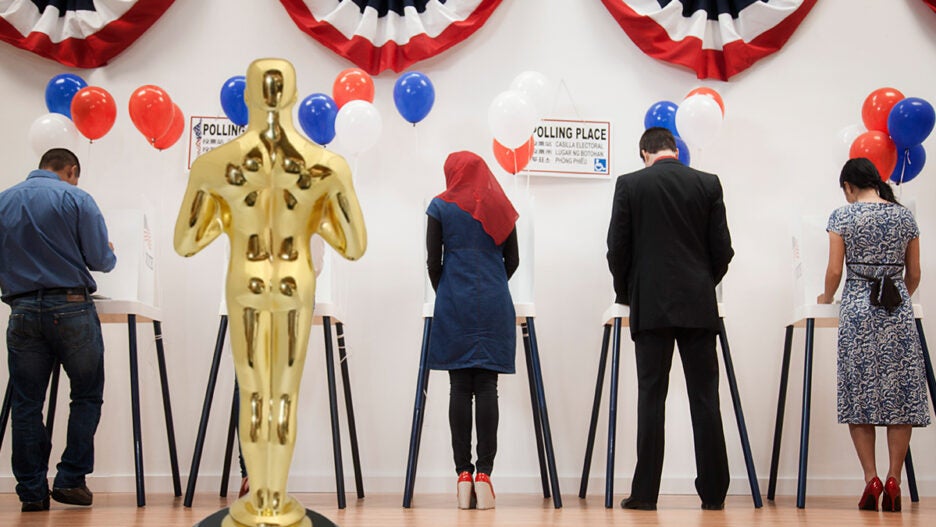
By Katie Usalis
Originally published in TheWrap, 3/23/2022
Elections within the Academy of Motion Picture Arts and Sciences and in U.S. politics have striking similarities. The Academy has one major leg up on our politics, though: its readiness to update its rules to meet 21st-century needs and values.
The Academy first began changing its system to increase representation as early as the 1930s, when it rolled out multi-winner ranked choice voting (sometimes called proportional ranked choice voting). Under this system, members of the Academy choose Oscar nominees by ranking up to five candidates in their respective category (e.g., directors rank candidates for Best Director). This system was expanded in 2010 when it was first used for choosing the winner for Best Picture.
By using RCV, the vote stays in play even if one’s first choice is eliminated. “The move was made to prevent a film from winning with only, say, 12-15% of the vote; rather than simply counting No. 1 votes, the system uses a voter’s rankings to determine which nominee has the most widespread support,” Steve Pond explained in TheWrap.
In response to criticism of the lack of diversity of its winners and leadership, The Academy has added more members (expand the House, anyone?), and ensured that 50% of these new members are women (gender targets, anyone?). The organization has also further expanded its use of ranked choice voting (RCV) to its Board of Governors elections (electoral reform, anyone?).
The Academy has abandoned its time-consuming and costly two-round runoff elections and upgraded its system for electing leadership. Dawn Hudson, CEO of the Academy, explained in an email, “Not only will this avoid ties, and additional voting, but it will also provide you with more choices and allow you to rank your candidates in order of preference, like the voting method for Best Picture. This system of voting ensures that the winner has the approval of the most and the broadest range of voters and helps guarantee that the winning candidates are more fully representative of your branch membership’s voting…”
And the award goes to…fair representation!
Interestingly enough, after the first use of ranked choice voting, women made up 61% of the Academuy’s Board of Governors and the representation of racial minorities increased from 24% to 29%. There’s still a long way to go for people of color, but it’s good to see movement in the right direction. And that all occurred in the very first use of the new system. It’s clear that voters want more diversity and fair representation in their leadership. The Academy uses RCV because it’s common sense: It’s fair, and produces results that reflect actual preferences.
Cynthia Richie Terrell, director of RepresentWomen and longtime advocate for election reform, has said: “It’s 2022 and the only woman presidents we’ve had are the ones played in TV shows and movies. Let’s take a lesson from our friends at the Academy of Motion Pictures and adopt ranked choice voting to elect an actual woman president.”
This experience with the Academy of Motion Picture Arts and Sciences is a perfect diorama of what can work in our U.S. political elections. In fact, this system is already working across the country. RepresentWomen’s RCV Dashboard shows us that 43 jurisdictions nationwide have abandoned the outdated winner-take-all system and upgraded to ranked choice voting. It also shows us that when voters’ power is strengthened, they vote for candidates who are women and people of color.
Last year, New York City used RCV for the first time in its mayoral and city council elections. The results were record-breaking. New York City now has a first-ever majority-woman city council, with 81% of those women being women of color.
As seen in the Oscars, in New York and in many other elections around the world, when an electoral system empowers voters to choose their real preferences (rather than the lesser of two evils) without fear of wasting their vote, women win.
And this isn’t just about fairness. Representation matters because diversity and gender balance in policy-making positions improves policy processes and policy outcomes. As Stefani Brown James of The Collective PAC said, “For us to have a democracy that works for the people, it should be made up of the people. And most importantly, to change the laws so that they better reflect the needs of our communities, we need to change the lawmakers.”
And to change the lawmakers, we need to change the systems we use to elect them.